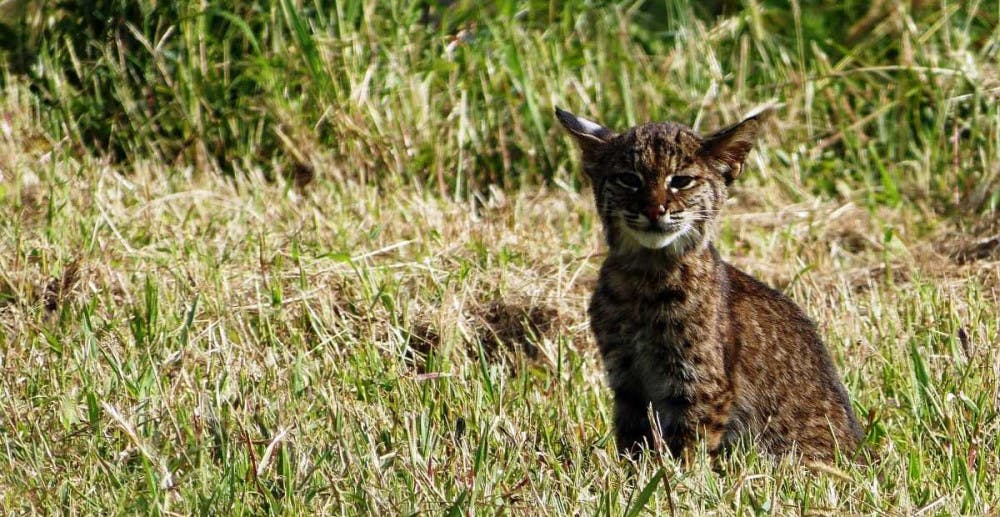Between a canceled spring break and midterms, students at the University of New Hampshire (UNH) are feeling the burnout. However, UNH students are not the only stressed-out wildcats. Bobcats may also be feeling increased stress because of human activity in residential and agricultural areas, according to a study by scientists with UNH’s New Hampshire Agricultural Experiment Station.
Researchers have found that hair samples of bobcats living closer to residential and agricultural areas have higher cortisol levels. Cortisol is a hormone that releases into a mammal’s bloodstream when faced with a difficult or threatening situation. The more cortisol that circulates in the bloodstream, the more that will end up in hair samples.
“Under normal conditions, cortisol helps our bodies regulate energy and gives us the resources needed to deal with the stressful situation. This is a good thing for our bodies—we deal with the situation then return to normal. However, chronically high cortisol levels can worsen individual bobcats’ health and lower reproduction rates of populations,” said wildlife ecologist Rory Carroll, assistant professor of biology at Southern Arkansas University, in a UNH press release.
Carroll conducted the study as part of his doctoral research at UNH, along with Marian K. Litvaitis, professor emerita of natural resources and the environment, and Thomas Foxall, professor of biological sciences.
The study also found that size, temperature and weather can affect cortisol levels. For example, bobcats’ cortisol levels are lower in the spring than in the fall. Below-average temperatures in the fall can also cause lower cortisol.
In order to isolate cortisol levels caused by stress from naturally occurring hormone changes, the researchers partnered with the Buttonwood Park Zoo and Squam Lakes Natural Science Center to observe their captive bobcats to use as controls.
“[Captive bobcats] are still experiencing temperature and weather [changes], but they’re not really stressed because they’re kept in constant conditions. They’re always fed the perfect amount of food. If they want to escape the conditions, they have an indoor pen. So, we used those samples as a baseline of what the cortisol levels in a bobcat should be,” explained Carroll.
The study found that, in addition to agricultural areas, bobcats had higher cortisol in “open development” areas, such as golf courses, large parks or cemeteries. This is because these “managed landscapes” lack plant biodiversity that would support prey species for bobcats.
Carroll also noted that bobcat cortisol levels were highest in areas with intermediate housing density. This is because food resources are more unpredictable. In contrast, both low and highly developed areas maintain their “own unique resource bases.” For example, squirrels that are attracted to bird feeders in high density areas can become a bobcat food source.
Bobcats’ ability to adapt is one of the things that make them unique. When studying how bobcats’ diets differ across New England, the researchers found bobcats not only specialized in different foods but developed unique hunting patterns depending on the area’s resources.
“They’re adaptable in the types of prey they can eat, and the types of places they can live, but they’re also really good at specializing in certain things when they have to,” said Carroll.
However, the rate at which humans are changing the landscape is outpacing bobcats’ adaptability, resulting in their higher cortisol levels. The study did not focus on whether bobcats’ cortisol levels were detrimental, but prolonged stress can cause immunity and reproductive issues.
Carroll hopes that the study will help preserve bobcat habitats during future land development projects, as well as inspire regulation on Vermont’s bobcat hunting season.
“An adaptable species has its limits. You can't just adapt to anything,” he said.
Photo courtesy of UNH Newsroom.












